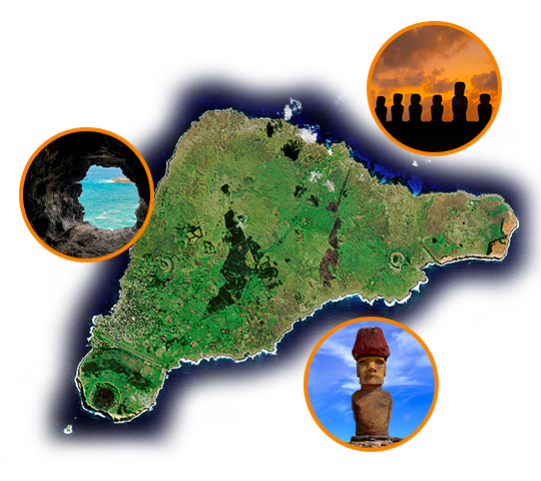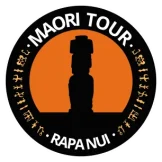Rapa Nui
Rapa Nui – The Island
Rapa Nui, known worldwide as Easter Island, is a small volcanic island located more than 3,700 km from the Chilean coast, in the middle of the Pacific Ocean. With an area of close to 160 km² and a population of approximately 8,000 inhabitants, its only town is Hanga Roa, the heart of local life and the starting point for most tours on Easter Island.

Belonging to Polynesia, Rapa Nui marks the eastern end of the Polynesian Triangle and is one of the most remote inhabited places on the planet. Its isolation did not prevent the development of a unique culture, with artistic, spiritual, and social expressions that distinguish it within tourism on Easter Island.
The moai, its enigmatic stone statues, are the best-known symbol of this civilization. Erected on ceremonial platforms called ahu, they represented the ancestors and connected the communities with their spirituality. Today, the moai are scattered throughout the island in volcanoes, beaches, and cliffs, framing sunrises and sunsets that make the places to visit in Rapa Nui unique settings in the world.
However, the cultural richness of Rapa Nui goes far beyond the moai. Its dances, songs, oral stories, body paintings, wood carvings, myths such as the Birdman competition (Tangata Manu), and its ancient rongorongo writing system make up a living heritage, passed down from generation to generation. Those looking for activities on Easter Island or authentic experiences will discover a culture that beats in every gesture, song, and ceremony.
Today, Rapa Nui is recognized as a unique destination: with a strong cultural identity, hospitality in its people, low crime, and a worldview that invites sharing. Visiting Easter Island is not only about exploring impressive landscapes, but also about connecting with a people who continue to honor their ancestors and keep their history alive.
Discover Our Island
Rapa Nui










